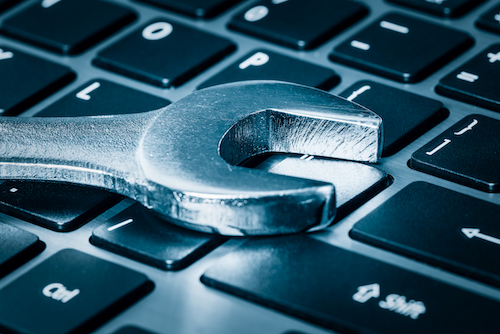Whether it’s a car or a computer, a bike or a bass guitar, staying on top of regular maintenance issues—cleaning, backing up, staying in perfect tune—is the best way to ensure that those things which you love and rely on stay in perfect shape. So why wouldn’t you do the same for your WordPress website? After all, WordPress sites are made up of many different component parts, including the core program, hosting, software, plugins and even themes. Throw in all your unique content and imagery and it’s obvious that, if even one of the parts should fail or become corrupt, there could be devastating effects throughout your site. And it could take a long time to fix damage that could have been avoided all together if some quick and simple steps had been performed on a regular basis.

Well, the smart folks over at wpbeginner.com have compiled a great little list of vitally important maintenance tasks WordPress users should be staying on top of at all times. And if you’re wondering how often you should be performing these various maintenance tasks, experts agree that—for sites that see a lot of traffic—at least every three months. For less busy sites, every six months is most likely enough.
Here are a handful of regular maintenance tasks to perform. Stay tuned for more suggestions in the next post.
- One of the most important things you can do on a consistent basis is to change your passwords. Make sure you use ones that are unique and hard to guess—be sure to use a combination of letters, numbers and symbols. Maintain a different password for your main WordPress site, admin area, FTP account and database, and never reuse the same password twice.
- WordPress experts continually harp about the importance of backing up your site, and for good reason. Should your site become compromised and crash, having a complete backup means you’ll have a much easier time restoring all your data and being available to your visitors and users quickly. Use a backup plugin if you don’t want to spend time backing up manually (although you should do manual backups that create a complete history of your site at least once or twice a year) and be sure you’re storing the backup copies in a safe and remote location such as Dropbox, Google Drive or another cloud-based service.
- If “backup, backup, backup” is the first mantra WordPress users constantly hear, then “update, update, update” is definitely a close second. The program comes with a very easy-to-use built-in system to handle updates for the core, plugins and themes, and you should always check to make sure you’re using the latest version. But don’t rely on an automated program to stay on top of updates for you: go to “Updates” on a regular basis and check for yourself that all elements of your site on working on the most up-to-date versions.
- If you’re using a plugin to manage your comments section and keep spam at bay, be sure to check out what it’s marking as trash. Sometimes the programs make mistakes and mark legitimate comments as spam, and that could spell trouble for sites that rely on user feedback.
- Lots of sites utilize handy forms as part of the user experience, yet too often admins don’t take the time to check that all the forms are rendering and functioning properly. Sometimes a misconfigured server or email provider may stop giving you alerts about new registrations or may stop sending out messages to your loyal visitors. So check all your forms and fix any problems as soon as possible.
- Your WordPress database is a critical part of your site, as this is where all your content, comments, user information and settings are found. But because so much data accumulates there, sometimes a lot of unnecessary junk clogs things up and slows down your site. So optimize your database, which removes the clutter and improves overall performance.
- When a site first gets up and running, it’s common to test it often to make sure it’s performing at its best. But over time too many owners and admins forget about this step and assume all is working well despite the fact that they’re adding new content all the time, installing new plugins etc., all of which can affect performance. So do regular tests of the speed of your site by checking out load and response times on your homepage and, indeed, on all the pages where your most visited and important content is found.


